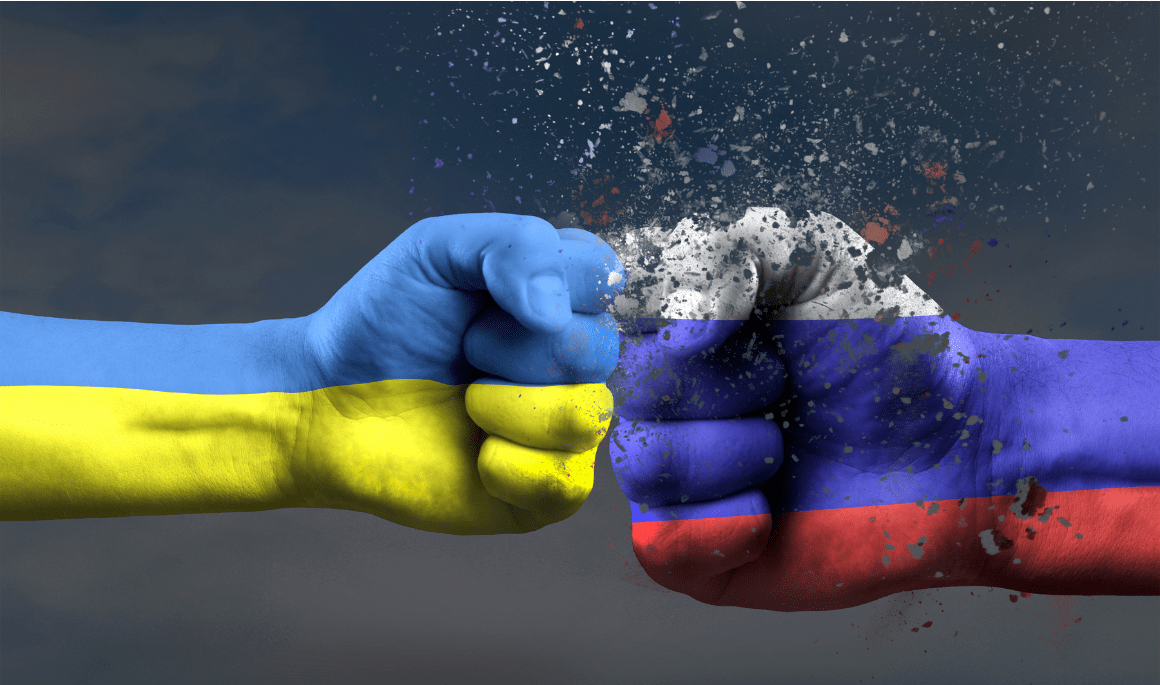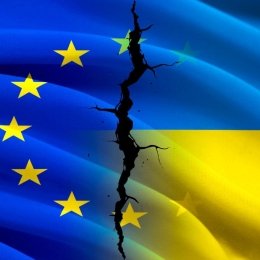- Norwich Blogs
- Blogs
- Putin’s Optimism Doesn’t Mean the End is Near in Ukraine
Putin’s Optimism Doesn’t Mean the End is Near in Ukraine
By Thomas Graham
Disclaimer: These opinion pieces represent the authors’ personal views, and do not necessarily reflect the official policies or positions of Norwich University or PAWC.

Last spring, hopes were high in Ukraine and the West that 2023 would bring, if not victory, then a decisive advance in the war against Russia. Ukrainian morale was sky-high: in the fall of 2022, Kyiv had liberated half the territory Russia had seized in the early weeks of the conflict, routing Russian forces in the Kharkiv province and recapturing Kherson, the only provincial capital Russia had occupied. The Russian winter offensive went nowhere. Indeed, it was so feeble that it was weeks before Kyiv and Western capitals concluded it had even been launched. In preparation for a major counteroffensive, the West was providing in greater numbers ever more advanced weaponry and training Ukrainian troops for NATO-styled operations. The expectation was that, at a minimum, Ukrainian forces would reach the Sea of Azov, severing Russia’s land bridge to Crimea.
Western and Ukrainian leaders believed, moreover, that Western sanctions would cripple the Russian economy and mounting casualties would demoralize frontline troops. The flight abroad of hundreds of thousands of young Russian men to evade a partial mobilization in the fall of 2022 would cause the Kremlin to refrain from taking a similar step to replenish the troops at the front. The growing public acrimony between Yevgeniy Prigozhin, the head of the Wagner private military company, and the Russian high command revealed promising cracks in the Russian elite—which were only reinforced in June, when Prigozhin unleashed a short-lived mutiny. In the view of the most ardent Ukraine-boosters in the West, Russia was on the ropes.
Last year did not quite turn out as hoped. By the end, it was Russian President Vladimir Putin, not Ukrainian and Western leaders, who saw reason for optimism. As he has argued since the early phases of the war, limited Ukrainian reserves, Western irresolution, and Russian resilience meant that time was on Russia’s side. The evidence suggests he might be right.
The Ukrainian counteroffensive failed; indeed, the frontlines hardly budged, even as the Ukrainians took heavy losses in men and equipment. In the face of such grave disappointment, the national unity that had reigned since the Russian invasion began to show cracks. Most troubling, the long-rumored tension between the two most popular leaders, President Volodymyr Zelensky and Valery Zaluzhny, the commander-in-chief of Ukraine’s armed forces, broke out in a public argument over whether the war had reached a stalemate, as Zaluzhny contended. Each man wanted the other to take responsibility for the large-scale mobilization of young men, which they feared would be widely unpopular but knew was unavoidable—Ukraine’s prospects were bleak if the average age of soldiers at the front continued to hover around 43. Disagreement over the state of the war and strategy was not the only source of acrimony—Zelensky was reportedly concerned Zaluzhny might have presidential ambitions of his own. In the end, Zelensky fired his rival.
Against the background of the failed counteroffensive, Ukrainian fatigue has spread across the West. The situation is most alarming in the United States. A year after Zelensky addressed a rousing joint session of Congress, many Republicans are opposed to providing further assistance to Ukraine, as is Donald Trump, the presumptive Republican presidential nominee. Their effort to link further aid to stricter controls on the southern US border has stalled the appropriation of $60 billion in assistance, which Ukraine desperately needs to replenish its dwindling stocks of munitions to hold off a mounting Russian offensive. Even though the funding is most likely to come through in the end, these tribulations will only nourish concerns about the United States’ long-term commitment to Ukraine.
Meanwhile, Putin exudes confidence, despite continuing heavy losses on the battlefield. Russia replenished its forces without having to resort to a general or partial mobilization. Rather, with monetary enticements and other perks, it managed to convince some 400,000 men to enlist, while large numbers of convicts continued to sign up for frontline duty in exchange for their freedom (if they survived). With the economy on a war footing, Russia has ensured that the frontline troops receive a continuing flow of weapons, perhaps not as technically sophisticated as those they have lost, but adequate for the task at hand. At the same time, Iran is providing hundreds of attack drones, which Russia uses against Ukrainian cities and infrastructure, while North Korea supplies artillery shells, which Russia is expending up to five times the rate Ukraine is.
Perhaps most important, the economy did not crater under the weight of Western sanctions, as the Kremlin had feared in the initial phases of the conflict. In 2022, the economy dipped by only 1-2 percent. In 2023, the economy grew by 3.6 percent. The forecast for 2024 is 2-3 percent growth. As the war drags on, Russia has found ways to circumvent Western sanctions and acquire banned Western technology, working in particular with countries from the global south. It has built a shadow fleet of tankers to evade the Western-price cap of $60 a barrel on its petroleum exports, while countries like China and India have increased their imports, albeit at a heavy discount. As a result, revenue from oil exports, long a critical element of the federal budget, now exceeds pre-invasion levels.
By the end of 2023, rumors began to surface that Putin was seeking to open up negotiations with Washington to end the war. This February, he made that offer explicit in an interview with American journalist Tucker Carlson. But he also made it clear that he had no intention of giving up any territory Russia had already seized. Washington, not surprisingly, was not interested. It remains steadfast in its position that it would not talk to Moscow about Ukraine without the Ukrainians in the room. Nor is it prepared to legitimate Russia’s land grab at the negotiating table.
As the war enters its third year, no end is in sight. Putin is preparing Russia for a long war of attrition. Ukrainians are not about to abandon the struggle for their survival as an independent state. And the West is not about to forsake Ukraine for peace with a bellicose Russia.
Indeed, what is becoming clearer is that a resolution of the war in Ukraine will not mark the end of the burgeoning conflict between Russia and the West. Putin is taking steps to harden his country for what he sees as a long hybrid struggle, in which national unity and political will are critical to success. That is why the Kremlin is cracking down hard on domestic dissent and stressing patriotic education. European leaders, meanwhile, are warning that Europe needs to be prepared for war with Russia, especially if Russia emerges victorious from the conflict in Ukraine. They are calling for a concerted effort to rebuild Europe’s defense-industrial sector after decades of neglect since the end of the Cold War. And the United States continues to prepare for a prolonged era of great-power competition. No one is inclined to give peace a chance.
Thomas Graham, a distinguished fellow at the Council on Foreign Relations, served as the senior director for Russia on the National Security Council staff during the George W. Bush administration. He is the author of Getting Russia Right, which was released last fall.



